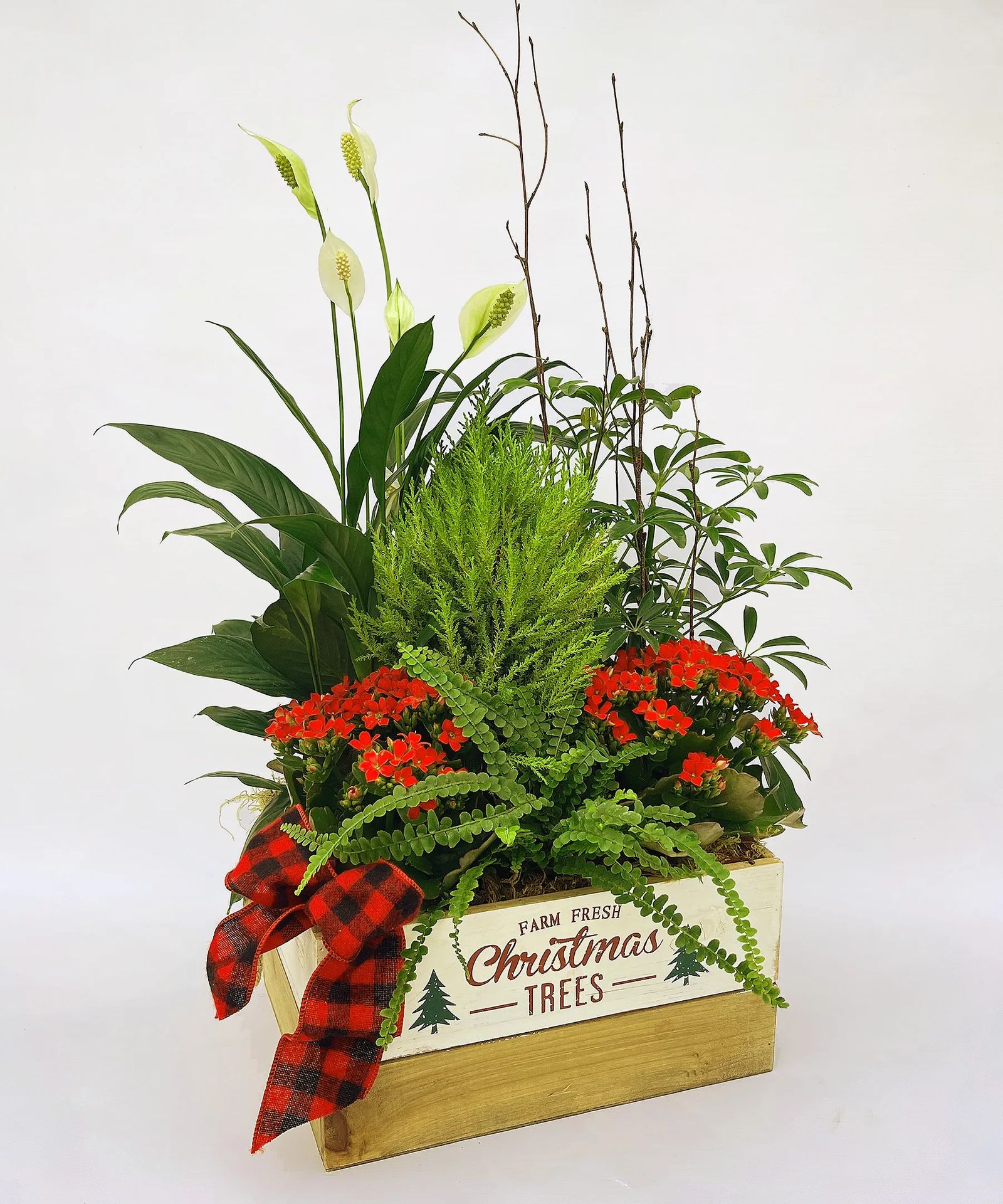
Move Over P0intsettia
The other blooms that steal the holiday show
While the poinsettia is the plant most people associate with the holiday season, the Christmas cactus, amaryllis and cypress tree also make a perfect gift or festive accent for your own home. With the proper care, they can be enjoyed well after the Christmas tree is put away.
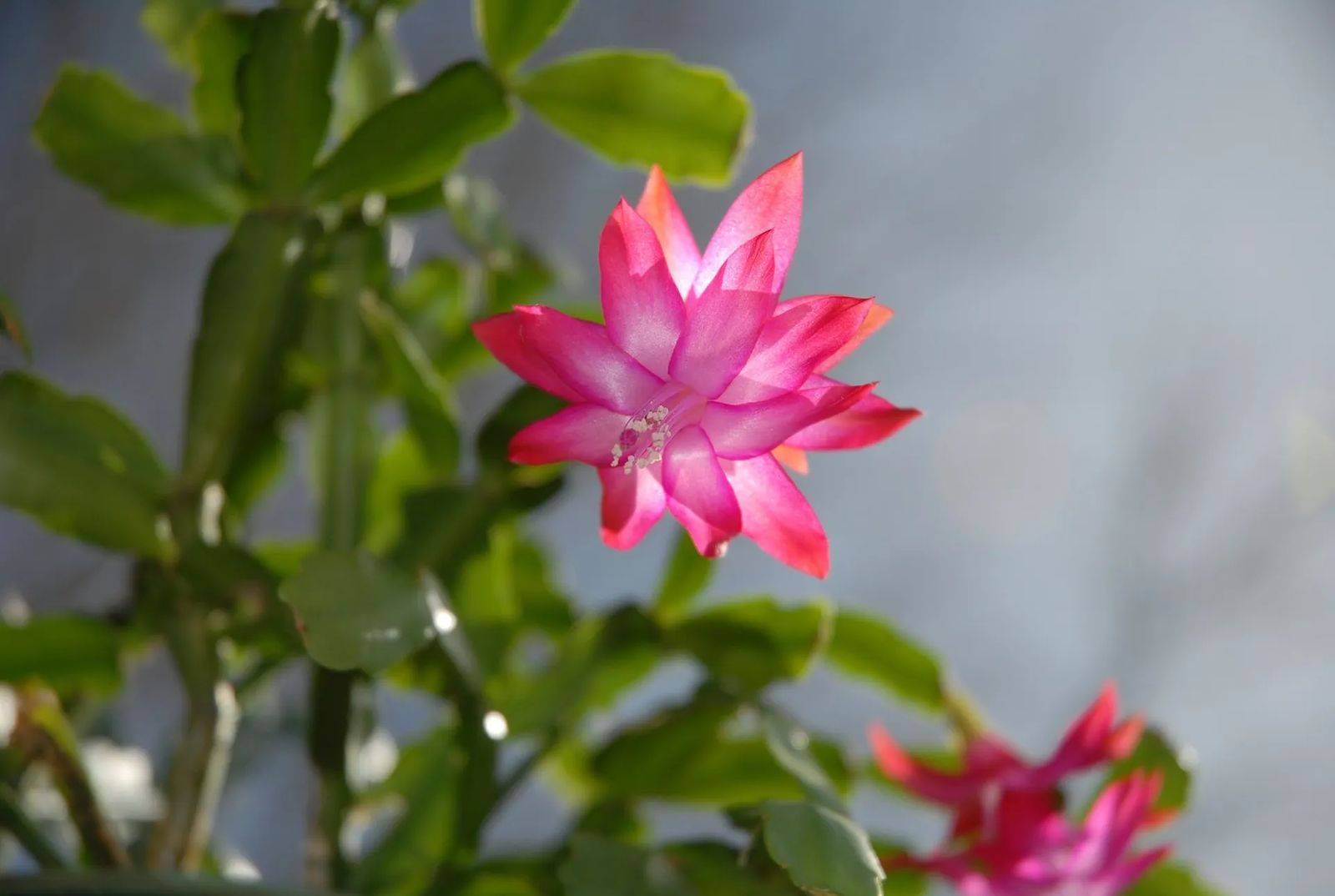
Christmas Cactus
Always a favorite, the Christmas cactus is known for its bright colorful tubular flowers. It is not drought tolerant as its name implies and the leaves will wrinkle from lack of water. Allow the plant to dry slightly between waterings and water thoroughly each time allowing all excess water to drain away. It is especially important not to let it go too dry while it is flowering.
After the flowers fade, fertilize the plant monthly as you would a green houseplant. Plants may be pruned in June to encourage branching and flowering. The sections you remove may be rooted in moist vermiculite.
The Christmas cactus is a relatively easy-care plant once you understand its calendar. It will flower when nights become longer in winter (about 15 hours of darkness) and it is exposed to cool temperatures (50-55°F). If the night temperature is closer to 70°F, the buds will not set and the plant will not flower.
Once in flower, the Christmas cactus needs bright indirect light. Daytime temperatures of 70°F and evening temperatures of 60-65°F are ideal. Too much light or heat may cause the flowers to fade more quickly and the buds to drop before blooming which is the most common problem with a Christmas cactus.
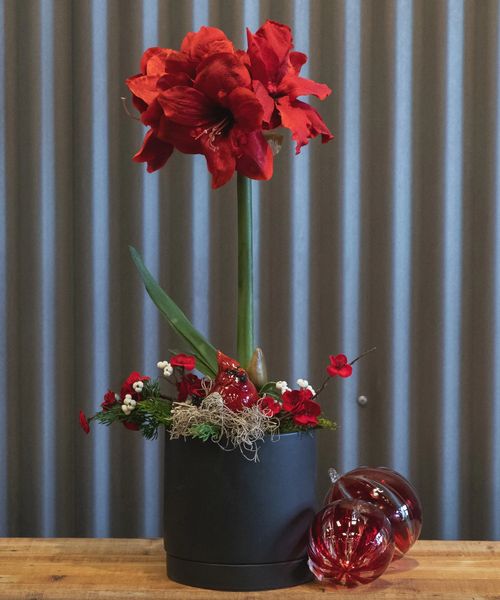.jpg?fit=outside&w=1600&h=1920)
Amaryllis
Whether sold as a kit or as a plant already growing, the amaryllis with its showy blooms adds a festive touch to any home. Plant bulbs in a potting medium leaving the neck exposed. Water sparingly until the stem appears, gradually increasing the water as the bud and leaves appear. Do not overwater, as this will encourage rot. The stem will grow rapidly with flowers developing after it reaches its full height.
After enjoying the prolific show, cut the old flowers off the stem, and let the stalk die back naturally before cutting it away from the bulb completely. Continue to water and fertilize regularly as the leaves grow. They are feeding the bulb for next year’s growth.
Cut the leaves off after they die, leaving two inches from the top of the bulb. Remove the bulb from the soil, and store it in a cool (40-50°F) dark place for a minimum of six weeks. Check the calendar and plant the bulbs again about eight weeks from the time you want them to bloom. Plant the bulbs in a pot leaving about one inch of space between the bulb and the edge of the pot. Place in an area that receives bright indirect light and get ready for the show again.
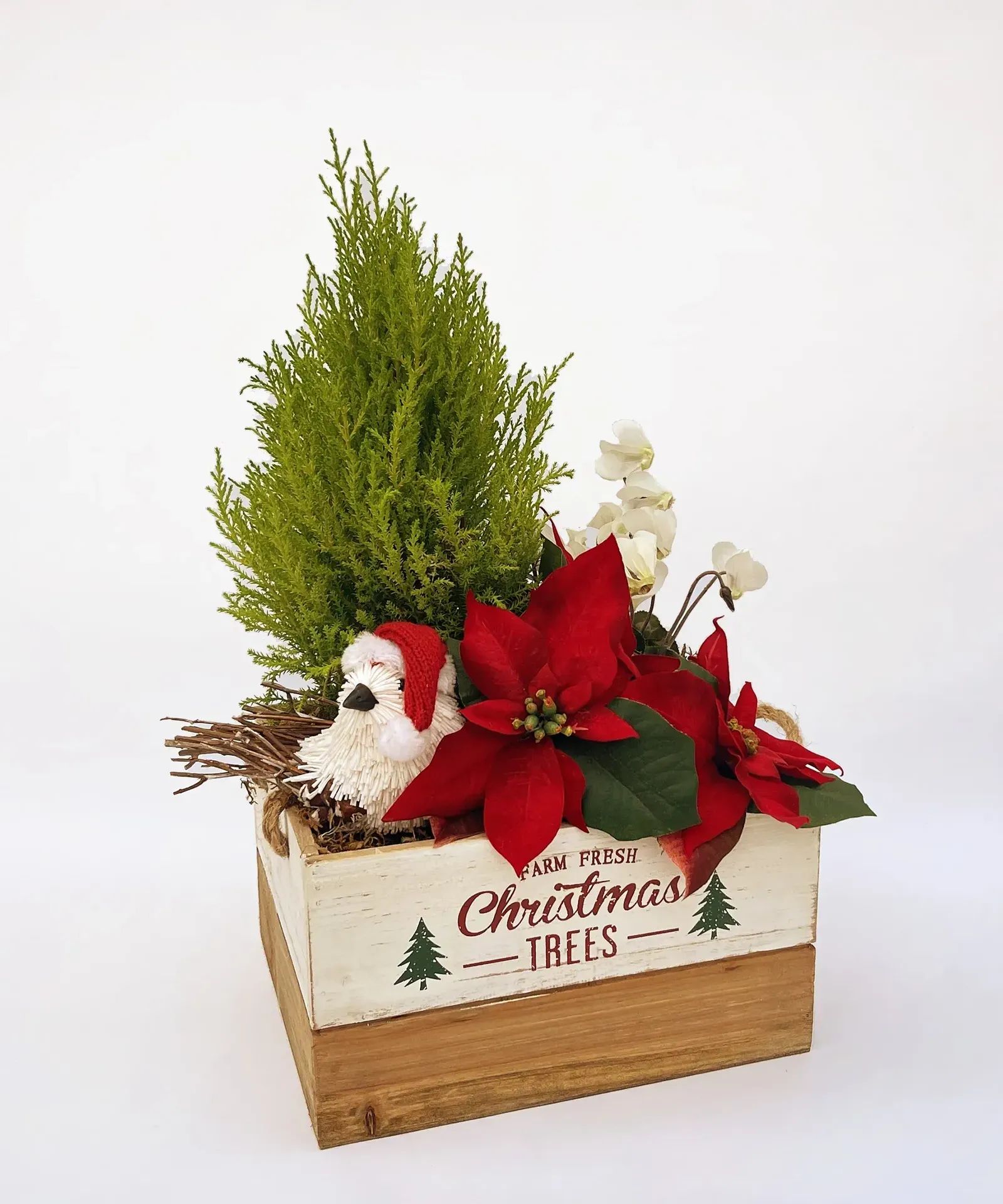
Cypress Tree
This little evergreen is a favorite for gift-giving because it looks like a miniature Christmas tree. Having delicate upright branches, it is not able to bear the weight of ornaments, but with a little imagination it can become as festive as any Christmas tree. Put it in a decorative holiday container, place pinecones or Christmas balls on the soil, swirl wired rice lights or garland around it or partner it with other festive plants in a holiday garden.
Cypress trees grow best in well-drained and damp to moist soil. A good rule of thumb is to feel the soil. When the surface to top inch is dry, it’s time to water. They do not like a soggy or wet soil and do not let the soil dry out completely. Consistency is the key. Water thoroughly each time you water being sure to let all excess water drain away. Place it in a bright location and enjoy.
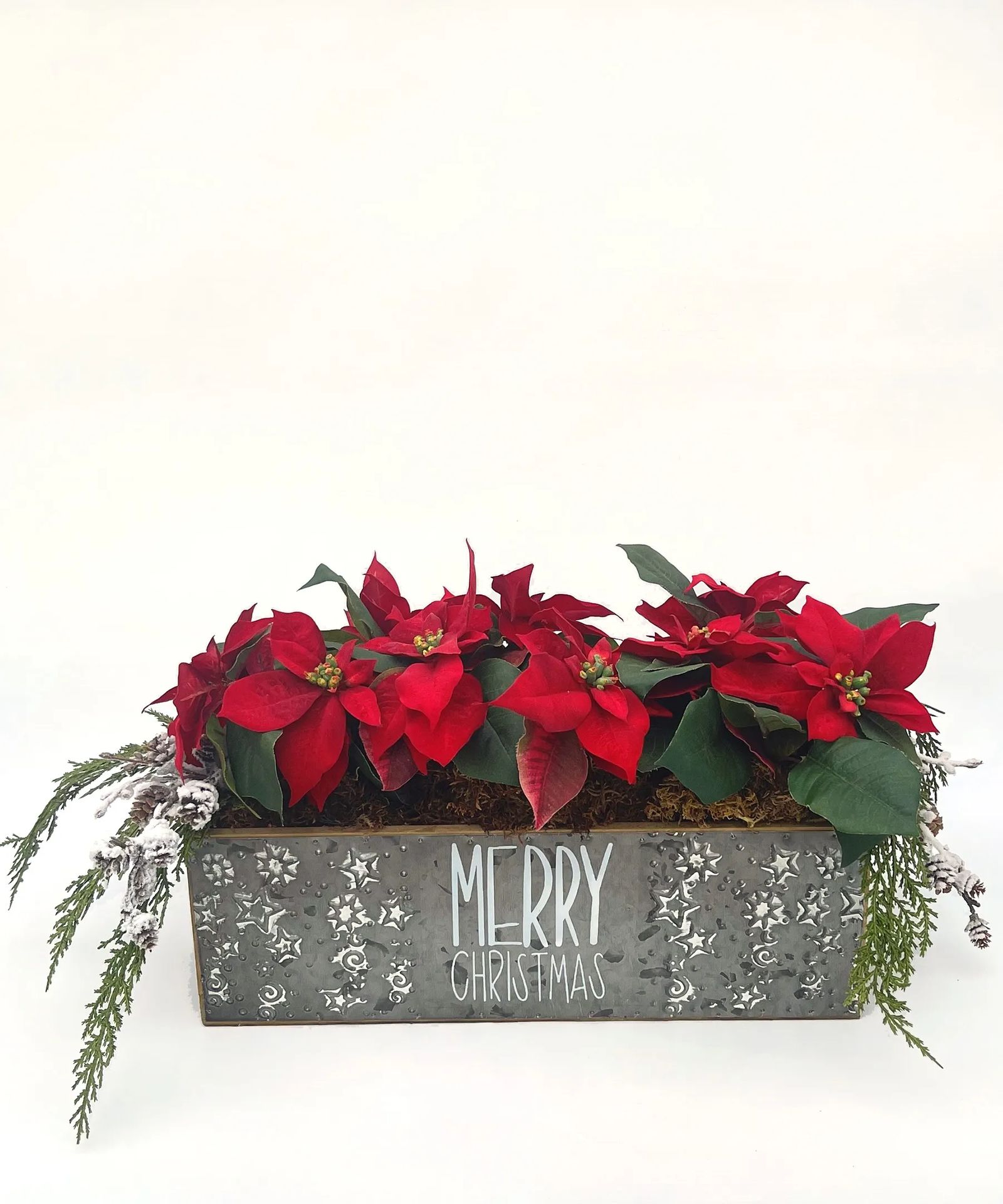
Poinsettia
The star blooming plant of the season is the poinsettia. The poinsettias is also one of the longest-lasting blooming plants available. With colors ranging from the traditional red to shades of pink, white, burgundy and many unusual novelty colors sporting names like Orange Glo (true orange color), Christmas Beauty Queen (coral with red specks) and Superb New Glitter (red with white spots and spashes), there is surely a poinsettia for everyone.
To Choose the Perfect Poinsettia
Pick a plant with small, tightly clustered buds in the center. Look for crisp, bright, undamaged foliage and avoid plants displayed in drafty or crowded areas.
To keep the poinsettia looking good, water thoroughly when the surface soil is dry to the touch and discard excess water. High humidity is preferable and be sure to place the plant away from hot or cold drafts, and if you are transporting the plant wrap it to protect it from cold winds.
If you have a gardener’s green thumb, you may want to try keeping your poinsettia and seeing if you can get it to re-bloom next year.
Follow this calendar
December: Poinsettia should be in full bloom. Water as needed.
February: The poinsettia’s color will start to fade. Keep it near a sunny window and fertilize the plant when new growth appears. Cut the stems back to about 8 inches.
June 1: Repot the plant, if needed. Continue to fertilize according to directions and water when the soil is dry to the touch. You may move the plant outside if temperatures do not fall below 50 degrees. Place it in light shade.
Late August: Bring the pot back inside. Cut the stems back, leaving 3 to 4 leaves per shoot. Place it in a sunny window. Water and fertilize as needed.
September 20 – December 1: This is the important part. Keep the plant in light only from 8am to 5pm. Put it in dark (no lights) from 5pm to 8am.
The key to success is the strict light/dark schedule.









